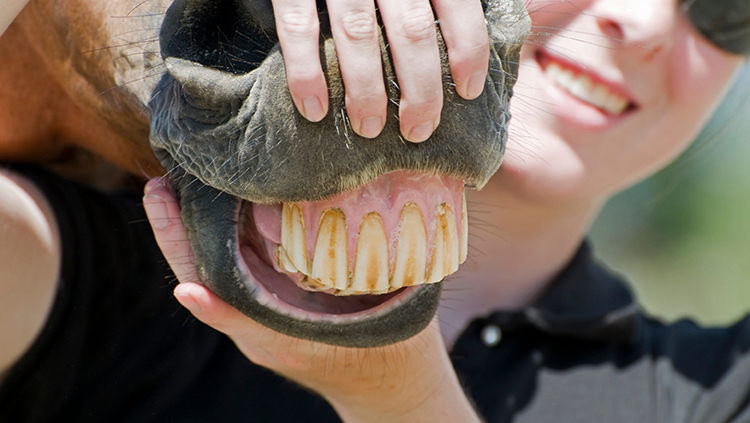Let’s face it—we’ve all been a little late on scheduling that six-month dental checkup at least a time or two. Life gets busy, things get in the way. We’ve all been told about the importance of regular dental cleanings and checkups. And we’ve all made our excuses. You might think “I have to work,” “I’m too busy with kids,” or even “My dog doesn’t have to go to a dentist every six months!” However, you shouldn’t be too quick to compare your oral hygiene and care with any animal. There are many vast differences between animal teeth and human teeth as well as the care required for each.
Types of Teeth
The type of teeth a being has is going to be dependent on what it eats. After all, the main job of our teeth is to break down our food for digestion. Consider these types of diets and the teeth associated with each:
Herbivore Teeth
Herbivore’s teeth are mostly used for smashing and grinding their food, which is plants. The teeth of herbivores are wide and flat to allow for this kind of breaking down. Animal teeth that are used for mashing plants don’t need sharp fangs to slash through meat.
Carnivore Teeth
The mouth of a carnivorous animal is filled with sharp teeth, ready to be used for attacking and shredding their meals. The animal teeth of a carnivore require knife-like teeth to slice their prey.
Omnivore Teeth
Humans are considered omnivorous, and therefore have a mixture of needs. Omnivores have a diet that consists of both plants and meat. Therefore, it’s important that omnivores have a mixture of sharp teeth that are able to cut and gnash as well as flat teeth that are able to smash and grind.
Caring for Animal Teeth and Human Teeth
The care provided for animal teeth vs. human teeth depends on a variety of factors:
Diet
One important thing to remember is that animals and humans have very different diets. For example, animals do not consume sugar like humans do. Sugar is a big culprit in tooth decay and cavities. A person’s teeth that are regularly exposed to sugar are more likely to need frequent checks and care. It’s recommended that people see a dentist for a check-up every six months, so don’t forget to schedule an appointment!
Treatment Options
Animal teeth and human teeth cannot be cared for in the same ways. For example, a fluoride treatment that helps human teeth can be lethal for dogs. Fluoride treatments do an excellent job of restoring protective minerals for human teeth, but it’s not an option for animals.
Funny Fangs
The animal kingdom certainly offers many shocking and appalling characteristics, and their dental features are no exception. Check out our list of unique and peculiar animal teeth!
Sheepshead Fish
This super strange fish sports teeth that closely resemble that of a human’s. (Do you think they might be interested in our Six Month Smiles plan?)
Crabeater Seal
This animal has very unique teeth that have grooves and notches on each of their many teeth. It almost looks like their teeth have teeth.
Tufted Deer
The teeth of the tufted deer break the mold when it comes to their type of teeth. Although they are herbivorous, they have two sharp, tusk-like teeth that grow long out of their mouths.
Both human and animal teeth are important and should be cared for properly. Teeth are how we are able to process our food. Infections of the teeth or gums can be hazardous to the health of both animals and humans. If you have any questions on the right dental care plan for you, learn more by contacting us at Danville Family Dentistry.


 (317) 745-4400
(317) 745-4400
